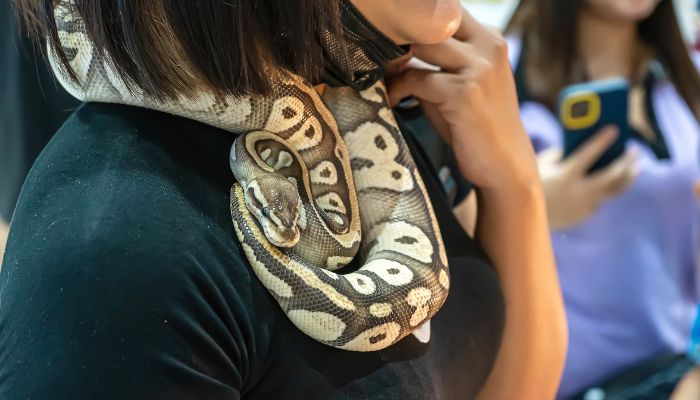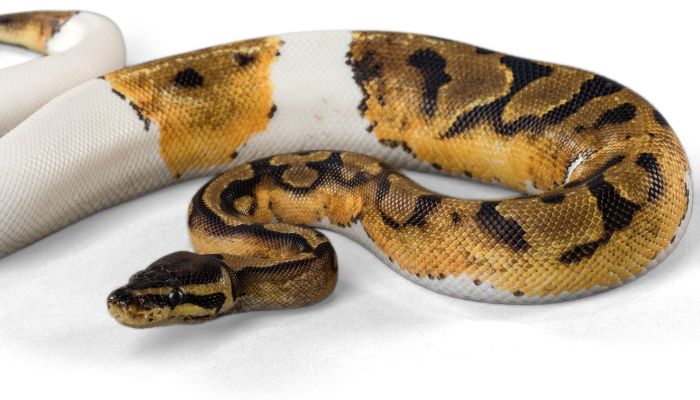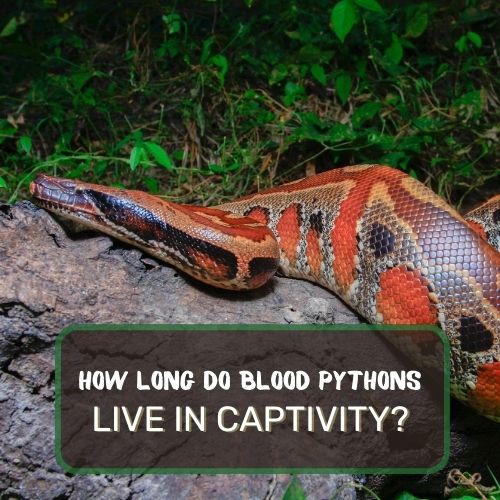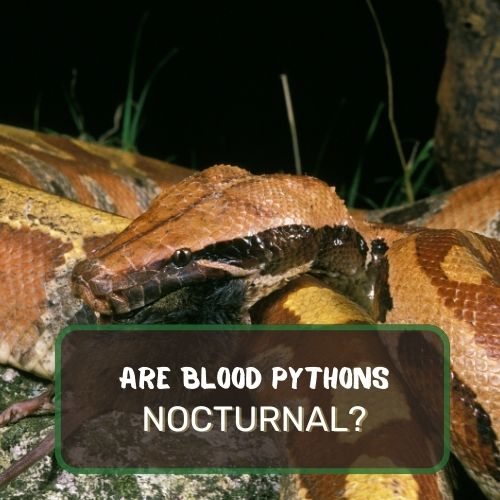Ball pythons, with their captivating patterns and docile nature, are a favorite among reptile enthusiasts. But like all creatures, they come with their unique quirks, especially when it comes to shedding.
Ball pythons typically lose their appetite during the shedding process. While some might eat, most tend to refuse food. It’s a natural behavior as their body focuses on shedding. It’s advisable to wait until after the shedding is complete to offer food, ensuring the snake’s well-being.
In this article, we’ll dive deep into the world of ball python shedding, exploring their feeding habits during this phase, the timeline of the shedding process, and common issues they might face.
From understanding the importance of temperature and humidity to addressing incomplete shedding, we’ve got it all covered.
Join us as we unravel the mysteries of ball python care during their most transformative phase.

Table of Contents
Feeding Ball Pythons During Shedding
If you’re a snake enthusiast or a concerned ball python owner, this issue has probably crossed your mind more than once. Let’s dive into the fascinating world of ball pythons and their eating habits during the shedding phase.
Common behavior of snakes refusing food during shedding
Imagine you’re wearing a tight, uncomfortable outfit. Would you feel like having a big meal? Probably not. Similarly, when ball pythons are shedding, they often feel a bit “off.”
Their bodies are focused on the shedding process, and eating becomes a secondary concern. It’s not uncommon for ball pythons to refuse food during this time. Think of it as their way of saying, “I’m a bit busy right now, can we do dinner later?”
Risks of feeding live prey during this time
Now, let’s talk risks. If you’ve ever thought of offering live prey to your python during its shedding phase, think again. During shedding, a ball python’s vision is compromised, making it harder for them to defend themselves.
A live prey could potentially harm the snake, especially if it senses the python’s vulnerability. It’s like inviting a guest over and then realizing they might not play nice with your other friends.
Recommendations on when to feed post-shedding
Patience is key. Once your ball python has completed its shedding process, it’s usually back to business as usual. Their appetite returns, and they’re ready for their next meal. It’s best to wait until after the shedding is complete to offer food. This way, you’re ensuring the safety and well-being of your slithery friend.

The Shedding Timeline
Shedding is a natural and essential process for ball pythons. But how long does it take, and what are the key phases to be aware of? Let’s break it down.
Duration of the entire shedding process
From start to finish, the shedding process for a ball python typically lasts between 10 to 14 days. It’s a meticulous process, and every stage is crucial for the snake’s overall health.
The significance of the “blue phase” in shedding
Ever noticed your ball python’s eyes turning a cloudy blue? This is known as the “blue phase” and usually lasts for 2 to 4 days. It’s a sign that the shedding process is in full swing. The blue tint is due to a lubricant forming between the old and new skin layers.
It’s like nature’s way of prepping the snake for a smooth transition. During this phase, the snake might seem a bit more reclusive or agitated. It’s their way of saying, “I’m in the middle of a makeover, give me some space!”
Importance of the lubricant between the old and new skin layers
This lubricant is the unsung hero of the shedding process. It ensures that the old skin separates from the new one seamlessly. Without this lubricant, the shedding could become problematic, leading to health issues for the snake.
It’s like trying to remove a tight ring without any soap – tricky and potentially painful. This lubricant ensures that the entire old skin comes off in one piece, leaving the snake with a fresh, new layer.

Handling Ball Pythons During Shedding
Ever been in the middle of a deep sleep and someone suddenly wakes you up? Annoying, right? That’s how ball pythons feel when handled during their shedding phase. Let’s delve into the reasons behind this.
Why it’s advised to avoid handling during the shedding phase
Handling a ball python during its shedding phase is like interrupting someone during their beauty routine. The snake is already going through a lot, both physically and mentally. Handling adds an extra layer of stress, which isn’t ideal.
Plus, their vision is compromised, making them more susceptible to sudden movements and potential threats.
The risks associated with handling, including potential bites
With compromised vision and heightened sensitivity, ball pythons are more likely to misinterpret actions during this phase. This means there’s an increased risk of them feeling threatened and reacting defensively.
And yes, this could include biting. It’s their way of saying, “Not now, I’m busy!”

Understanding Frequent Shedding
Just like how kids outgrow their clothes faster than adults, juvenile snakes shed more frequently than their older counterparts. But what’s considered “normal,” and when should you be concerned?
Shedding frequency in juvenile snakes
Young ball pythons are growing rapidly, and with growth comes the need to shed old skin. It’s not uncommon for juveniles to shed every 3 weeks. It’s nature’s way of accommodating their fast-paced growth.
Signs that something might be wrong
However, if your juvenile is shedding more often than every 3 weeks, or if an adult is shedding more frequently than every 4-6 weeks, it’s time to raise an eyebrow. This could be an indication that all’s not well in python paradise.
Parasite infestations: mites and ticks
One common culprit behind frequent shedding is parasite infestations. Mites and ticks can be a nightmare for ball pythons.
These pesky parasites can cause discomfort, leading to more frequent shedding. Mites, in particular, are tiny and often black, making their home under the snake’s scales.
Treatment and prevention of infestations
First, if you suspect an infestation, it’s essential to consult with a reptile vet. They can provide guidance on the best course of action. Common treatments include removing the parasites manually and using specialized treatments.
Prevention is always better than cure. Regularly cleaning the snake’s enclosure, maintaining the right humidity levels, and keeping an eye out for early signs of infestations can go a long way in ensuring your ball python stays happy and healthy.

Incomplete Shedding Issues
Shedding is like a rite of passage for ball pythons. But what happens when this process doesn’t go as smoothly as it should? Let’s explore the world of incomplete shedding and how to address it.
Reasons why a snake might not shed in one piece
Incomplete shedding, often termed as “retained shed,” can be a snake owner’s nightmare. Several factors can lead to this issue. Low humidity, incorrect temperatures, or even skin conditions can prevent a snake from shedding its skin entirely.
Importance of temperature, humidity, and proper handling
The shedding process is a delicate one, and the environment plays a pivotal role. Think of it as trying to bake a cake in an oven that’s too cold or too hot – the results won’t be great.
Similarly, if the temperature and humidity in the snake’s enclosure aren’t optimal, the shedding process can be disrupted. Proper handling is also crucial. Handling a snake too much during its shedding phase can lead to patches of retained shed.
Solutions for stuck skin and shedding aids
Firstly, don’t panic! If you notice patches of old skin still clinging to your python, a lukewarm soak can work wonders.
This helps soften the retained shed, making it easier to remove. There are also shedding aids available in the market that can assist in the process. However, always consult with a reptile expert or vet before trying any new treatments.
Conclusion
You’ve journeyed through the intricate world of ball python shedding, understanding their feeding habits, the shedding timeline, and potential issues they might face.
Remember, these creatures rely on your care and attention, especially during such transformative phases. With the right knowledge and a touch of patience, you can ensure your ball python thrives.
Keep up the good work and continue to be the best caretaker for your slithery friend!
FAQ
Are snakes hungry when they shed?
Not necessarily. Many snakes, including ball pythons, tend to lose their appetite during the shedding process. It’s their body’s way of focusing on one thing at a time.
Do ball pythons stop eating before shedding?
Yes, it’s common for ball pythons to refuse food during their shedding phase. It’s a natural behavior and not a cause for concern.
Are ball pythons active when shedding?
Ball pythons tend to be less active during shedding. Their vision is compromised, and they prefer to stay safe and avoid potential threats.
How do I know if my ball python needs help shedding?
If you notice patches of old skin still attached after the shedding process or if the snake seems distressed, it might need some assistance. Always approach with care and consult an expert if unsure.
How long should a ball python soak in water?
A 15-20 minute soak in lukewarm water can help with shedding issues. Ensure the water isn’t too hot or too cold, and always supervise your snake during the soak.




0 Comments